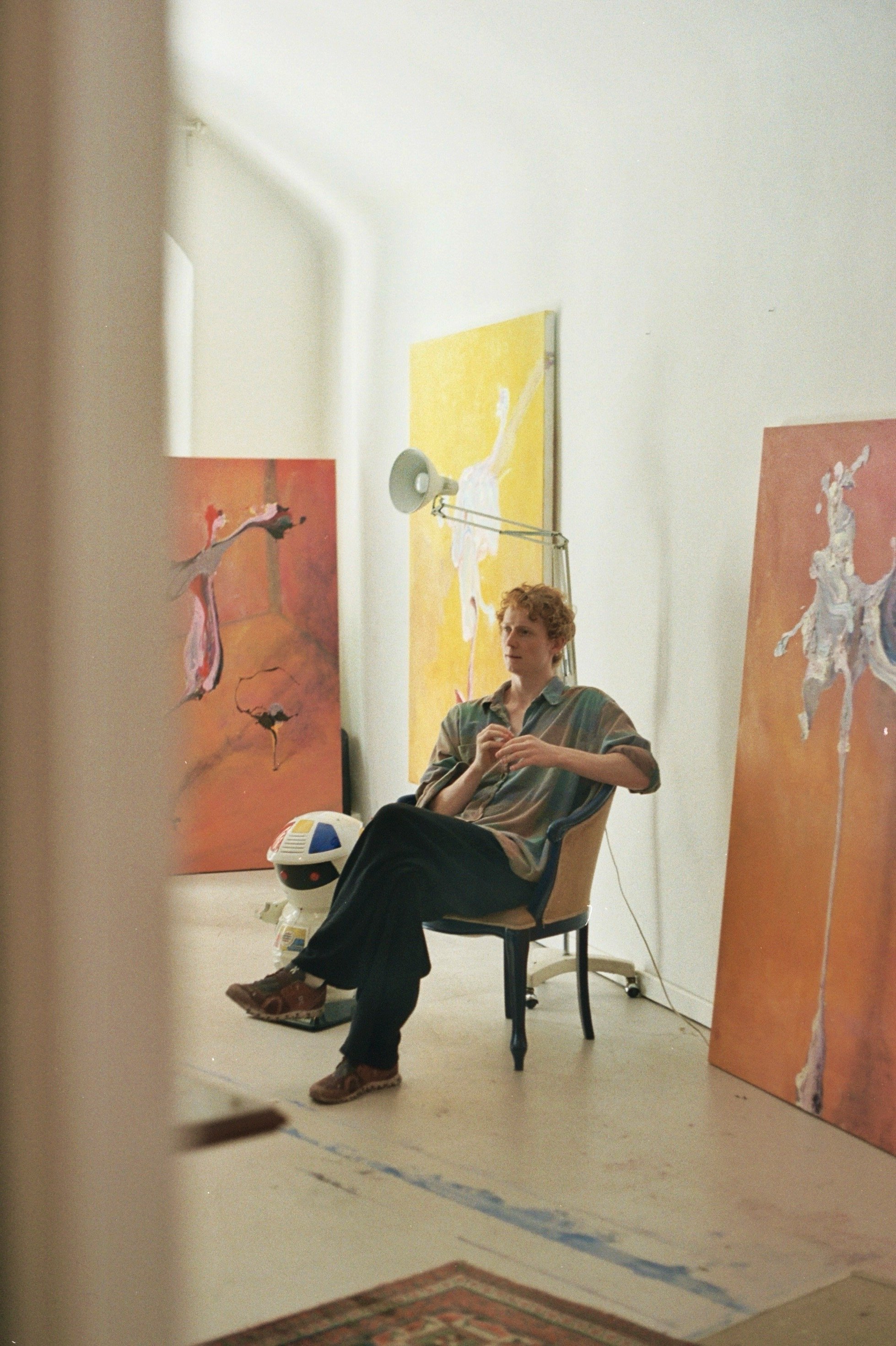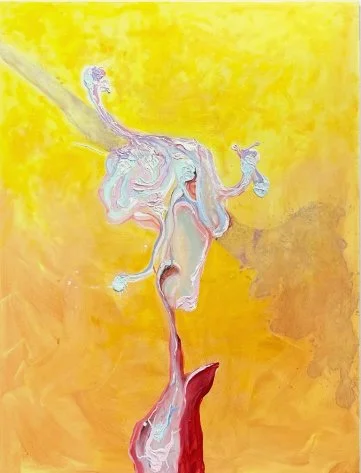
MICHAEL ALEXANDER CAMPBELL
Firenze, Italy. June 2025




Do your paintings typically begin with an image, a feeling, or something else entirely—how do they start?
It depends. Recently, I’ve been taking pictures in my daily life of scenes I wish to paint. In the past, I’ve used found images, other people’s photographs, or nothing at all.All the works I’ve made during this residency are based on pictures I’ve taken. I want the paintings to inherit the form of the images without taking on their content. Sometimes the shapes of things are much more interesting than the things themselves. One can also become burdened by the significance of subject matter and ignore the painting itself. If the composition is interesting enough, abstracting its content elevates rather than reduces the work.
Can you describe your creative process in detail—from first idea to finished painting?
However the painting starts, as soon as the brush touches canvas, it becomes a two-way street. In other words, I don’t just project an image from my head onto the canvas. I make a move, then I let the painting suggest a move. It’s like a dance. Yes, I lead—but it’s not a one-sided affair. This way, I have the privilege of surprising myself.
How would you describe your artistic practice in a few words?
I think Kierkegaard has a nice analogy in Either/Or about the difference between music and language. Music is instantaneous, whereas language, as a medium, is like trying to know the culture of a country by walking around its border and looking in from the outside. I’d like to appropriate this analogy and replace music with painting. There’s something instantaneous about painting that words can only circumambulate. This is also why, though I love the phrase “visual language” as an analogy, I don’t think it’s an accurate description of the function of painting. There’s nothing I’m trying to say. A more accurate analogy would be me inviting you into some kind of strange but hospitable world which I sometimes inhabit.
In what ways has the city influenced this new body of work?
A lot of the images I’ve painted were taken here in Florence. My studio is right next to the Ponte Santa Trinita, where everyone sits to look at the Ponte Vecchio. There are a plethora of generic things I could say about this city's art and history that have moved me to my core. However, I think it’s only in hindsight that I’ll be able to say something true and precise.
Is your creative process more spontaneous or structured?
I refer to a quote sometimes attributed to Somerset Maugham: “I write only when inspiration strikes. Fortunately, it strikes every morning at nine o’clock sharp.” I don’t have a schedule, but sometimes you just have to go to the studio and see what happens.
What do you hope someone experiences when living with one of your pieces?
I think living with art is elevating. While I obviously want the paintings to look good at first glance, I also want them to be durable and lasting in their quality. I think art, like literature, contains something greater than the sum of its parts. This is not a rational belief—in fact, I think believing this is almost a substitute for religion. However, let us say, in the worst case, that life is meaningless. Then I contend that the things we often mistake for being the meaning of life are surely not bad things to pursue. I refer to love, art, happiness, freedom, knowledge. Even if we’re wrong, it doesn’t feel like squandered time.



